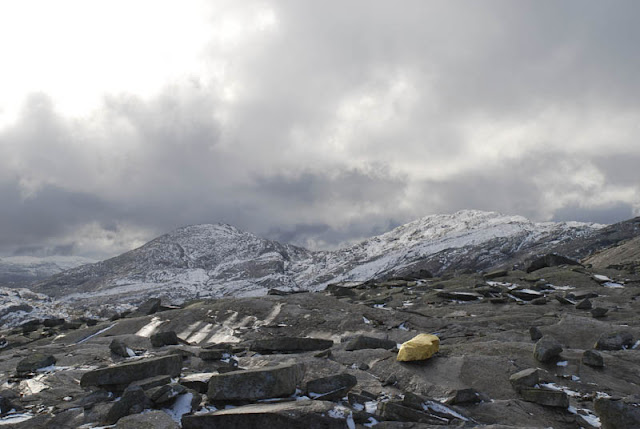| Kurt Johannessen and Jørgen Knudsen, "Blu 5", 1995. |
Again I want to show something I saw a long time ago. "Blu 5" by Kurt Johannessen and Jørgen Knudsen has stuck with me for more than a decade (like this and this and several other works that I have labelled "general").
I do not remember the whole succession of "Blu 5". In fact, I do not remember much of it at all: Very little of the sound and only one image stands out clearly. But I do remember the feeling of anticipation as I stood together with other people along the wall in Bergen Kunsthall waiting to see what would happen.
And I remember my awareness of Kurt Johannessen's presence and his slow movements, mixed with an uneasy consciousness of my own presence in the room.
| Kurt Johannessen and Jørgen Knudsen, "Blu 5", 1995. |
There was a film projector towards which Kurt Johannessen moved very slowly, with arms lifted out to the sides and no shirt on. Then, when he had finally reached the focus point of the projected image, butterflies emerged on his stomach. And he let them flutter.
This is such a simple concept, verging on a cliché. The solution to that slightly tense uncertainty about what the performance would evolve into was an illustration of that very feeling: Butterflies in the stomach.
Kurt Johannessen has produced many books with short instructions - "Exercises" - that are suggestions for actions so simple that one may at first scuff at them, before one realizes that they may carry great poetic potential.
"Blu 5" and the land art piece I presented about a week ago have a similar quality. They are simple and grounded by very literal references. In "Blu 5" a metaphor collapses into a literal image, and thus it becomes poetry.

